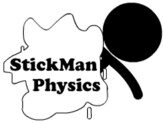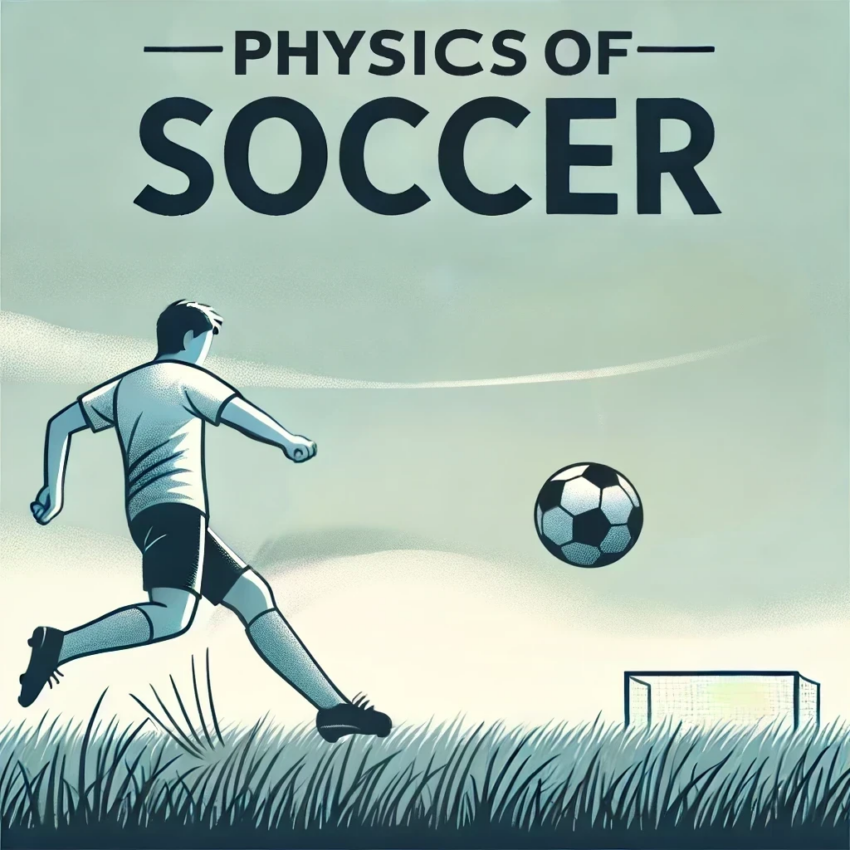Soccer isn’t just about agility and skill; it’s a showcase of real-world physics in motion. From the player’s kick to the ball’s flight path, every movement is governed by fundamental principles of physics. Let’s explore the fascinating science behind soccer, diving deeper into the mechanics of kicks, playing surfaces, and the iconic Magnus Effect.
Differentiating Newton’s Second and Third Laws in Soccer Action
In the world of soccer, understanding physics can give you a deeper appreciation of the game’s artistry and power. Newton’s Second and Third Laws aren’t just textbook concepts—they’re the foundation of every stunning goal, powerful strike, and jaw-dropping save. While Newton’s Third Law focuses on the interaction between two objects, like the player’s foot and the ball, Newton’s Second Law zeroes in on how forces impact the motion of one object, like the ball’s trajectory toward the goal. Let’s dive into how these laws unfold in the beautiful game, just like how legends such as Cristiano Ronaldo and Megan Rapinoe turn physics into poetry on the field.
Newton’s Third Law: Equal and Opposite Forces in Every Kick
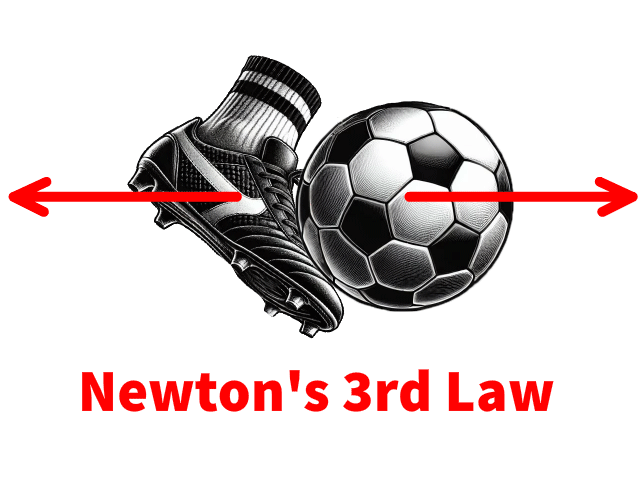
Every time a player unleashes a thunderous kick, Newton’s Third Law is in full play. When the foot connects with the ball, the player exerts an impulse—a force over a brief moment of time—that sends the ball hurtling forward. At the same time, the ball exerts an equal and opposite impulse back on the player’s foot. This interaction is why players feel the power of their own strike. Whether it’s a curving free kick like Lionel Messi’s or a blistering shot like Erling Haaland’s, the same principle applies. The force the ball experiences from the kick is perfectly mirrored by the force felt by the player’s foot, showcasing the beauty of action-reaction forces.
Newton’s Second Law: Making the Ball Accelerate
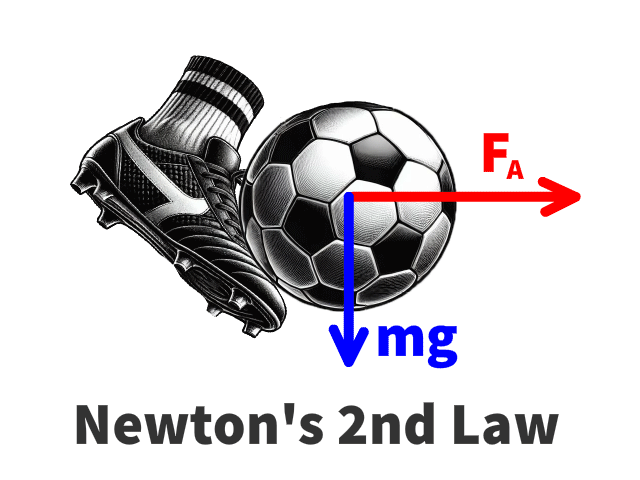
Now, let’s focus on what happens to the ball after it’s kicked—a perfect showcase of Newton’s Second Law. The ball experiences not only the force of the kick but also the constant pull of gravity (mg). The net force, or the combination of all forces acting on the ball, determines its acceleration and ultimate trajectory toward the goal. This is why technique and timing are so critical. A carefully aimed strike, like those perfected by Alex Morgan, leverages the net force to create an unstoppable shot. Over the brief contact period with the foot, the impulse from the net force alters the ball’s momentum, dictating its speed and direction as it slices through the air.
Player’s Height and Technique: Does Size Matter?
Height and leg length can influence a player’s kicking mechanics. Longer legs provide a greater swing radius, potentially increasing foot velocity and force. However, shorter players can compensate with agility and precision. What truly matters is the ability to harness biomechanics, combining strength, timing, and proper posture to produce powerful and accurate kicks.
Playing Surfaces: Grass vs. Turf and Ball Dynamics
The behavior of a soccer ball varies significantly based on the playing surface. Grass fields, with their natural irregularities and friction, tend to slow the ball, affecting both speed and bounce. Artificial turf, being smoother, allows for faster gameplay. This difference is due to the coefficient of friction and coefficient of restitution:
• Friction: Grass absorbs more energy, reducing ball speed. (Learn more about friction and the coefficient of friction)
• Restitution: Turf returns more energy during impact, leading to higher bounces. (Learn more about restitution)
Additionally, moisture on grass can create a slick surface, further altering the ball’s behavior. Understanding these variations helps players adapt their strategies depending on the field.
The Bounce of a Soccer Ball: Pressure and Surface Interaction
A soccer ball’s bounce is governed by its internal air pressure and the surface it strikes. A well-inflated ball compresses less during impact, conserving energy and resulting in higher rebounds. Lower pressure reduces rebound height, as energy is lost during deformation. This phenomenon highlights elastic potential energy: a compressed ball acts like a spring, returning stored energy upon release.
The surface also plays a critical role. Harder surfaces, like concrete, reflect more energy, increasing bounce height, while softer surfaces, such as grass, absorb energy, reducing the bounce.
The Magnus Effect: The Physics Behind Soccer’s Most Stunning Goals
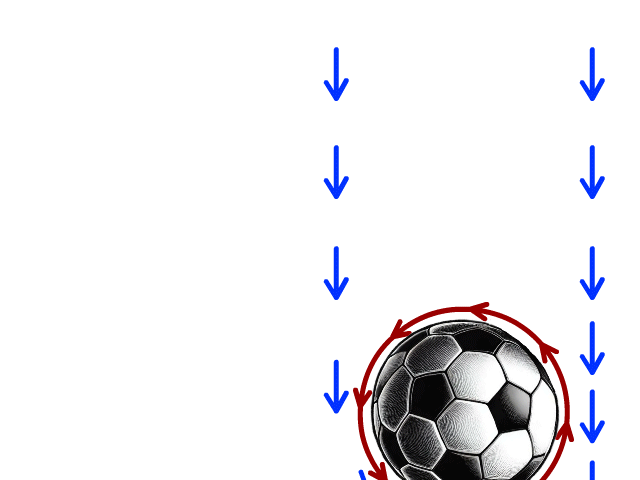
Few things in soccer are as mesmerizing as watching the ball curve mid-air, bending its way past defenders and goalkeepers. This magic on the pitch owes its existence to the Magnus Effect, a physics phenomenon named after Heinrich Magnus, the physicist who first studied it. The Magnus Effect explains how spin causes a ball to curve, and it’s been behind some of the most unforgettable moments in soccer history—including winning goals that left fans in awe.
How the Magnus Effect Works on the Field
When a player strikes the ball with spin—such as a right-footed kick with the inside of the foot—it drags a thin layer of air around it in the direction of its rotation. This sets up an unequal interaction with the surrounding air:
- Opposing Airflows: On the side where the ball’s rotation moves against the oncoming airflow, the interaction slows the air and creates higher pressure.
- Flowing Airflows: On the opposite side, where the ball’s rotation moves with the airflow, the air accelerates and bends inward, reducing pressure.
This imbalance in pressure causes the air to deflect to one side, while the ball itself reacts with an equal and opposite force, curving dramatically toward the other side. For example, a counterclockwise spin on the ball pushes the ball to the left, creating the iconic “bend” that players like Lionel Messi have perfected.
Corner Kick Magic: The Impossible Made Possible
One of the most famous examples of the Magnus Effect in action occurred during the 1997 FIFA Confederations Cup. In a game against France, Roberto Carlos of Brazil delivered what seemed like an impossible free kick. From a tight angle, he launched the ball with such intense spin that it curved around the wall of defenders, out of the goalkeeper’s reach, and into the net. Without the Magnus Effect, such moments of brilliance would simply defy the laws of physics.
Even corner kicks, like the rare “Olympico” goals where the ball is curled directly into the net from the corner flag, are made possible by the Magnus Effect. These incredible feats require a precise combination of spin, power, and understanding of the ball’s trajectory, all powered by this fascinating principle of physics.
The Beautiful Game Meets Beautiful Science
Whether it’s a stunning free kick, a bending cross, or an Olympico goal, the Magnus Effect transforms the sport we love. It adds an element of unpredictability and artistry, elevating soccer from a game of skill to a spectacle of science in motion. The next time you see a perfectly curved ball ripple the net, you’ll know it’s not just talent—it’s physics working its magic on the pitch.
Projectile Motion: Calculating the Perfect Kick
The ball’s trajectory depends on its launch angle, initial velocity, and air resistance. In a vacuum, a 45-degree angle maximizes distance. However, air resistance and spin alter this ideal in real-world conditions. Players must adjust their kicks based on factors like wind speed and ball rotation.
The interplay of gravitational force, drag, and lift (Magnus Effect) produces mesmerizing curving shots, allowing skilled players to bypass defenders and goalkeepers.
The Beautiful Game: Where Science Fuels Magic
Soccer isn’t just a game of skill, teamwork, and heart—it’s a dynamic interplay of physics in motion. From the explosive power of a kick to the mesmerizing curve of a bending shot, every moment on the field is shaped by scientific principles like Newton’s Laws, the Magnus Effect, and projectile motion. These forces work together to create the unforgettable goals and thrilling saves that keep fans on the edge of their seats.
Think of Roberto Carlos’s impossible free kick or the rare Olympico goals curled directly into the net—none of these feats would be possible without the hidden hand of physics. So, the next time you see the ball spin, bend, and ripple the back of the net, know that it’s not just talent or practice making it happen; it’s a perfect harmony of science and sport. Soccer is truly the beautiful game, elevated by the elegance of physics.
